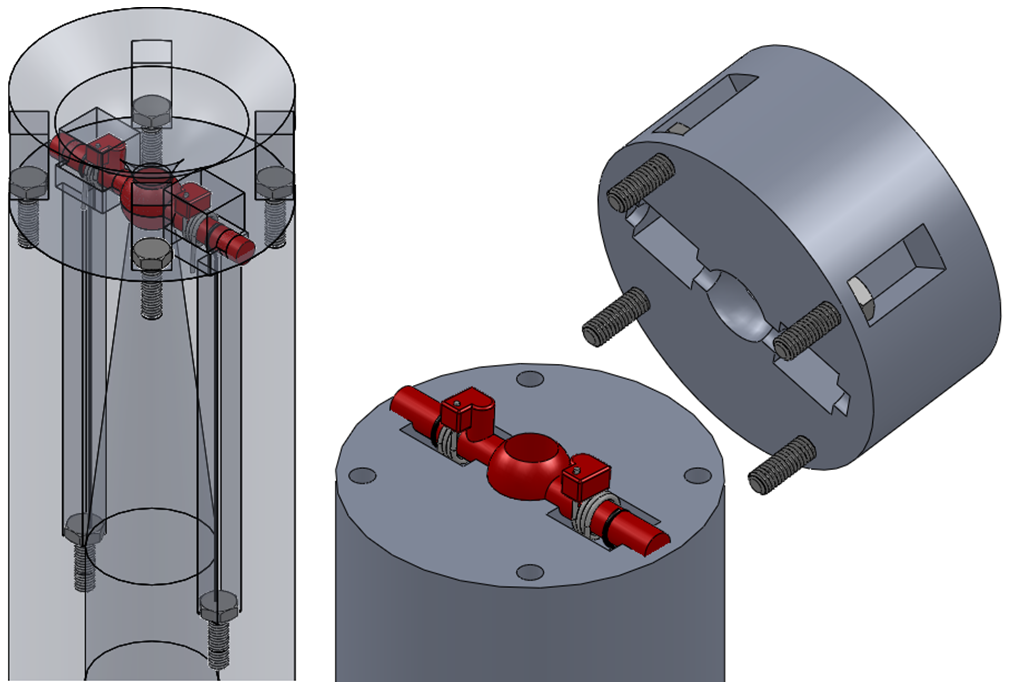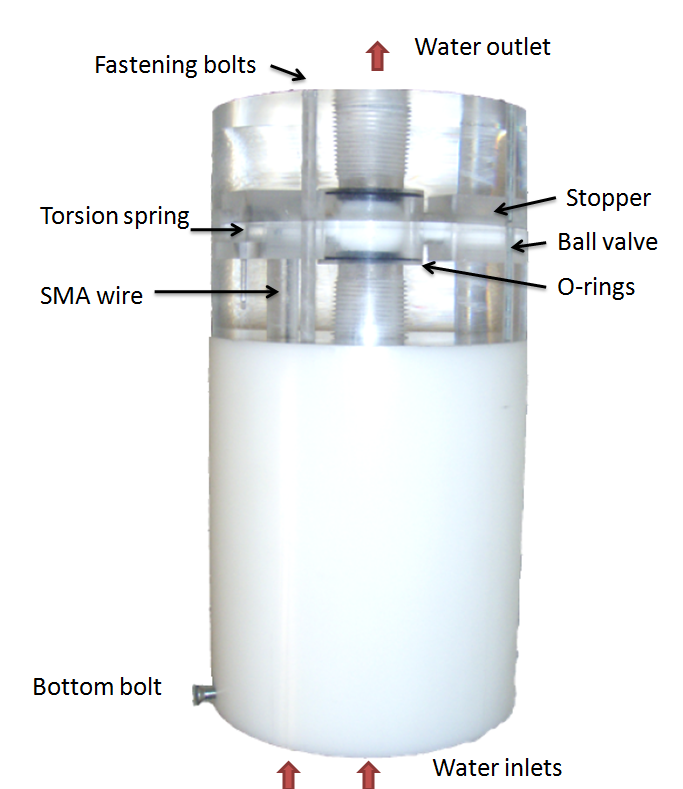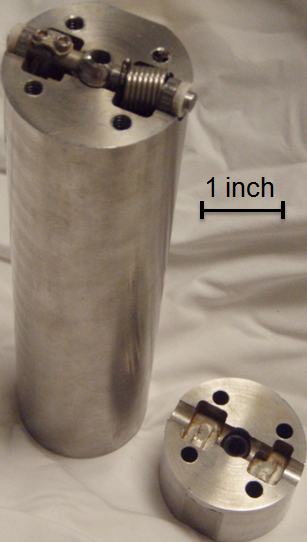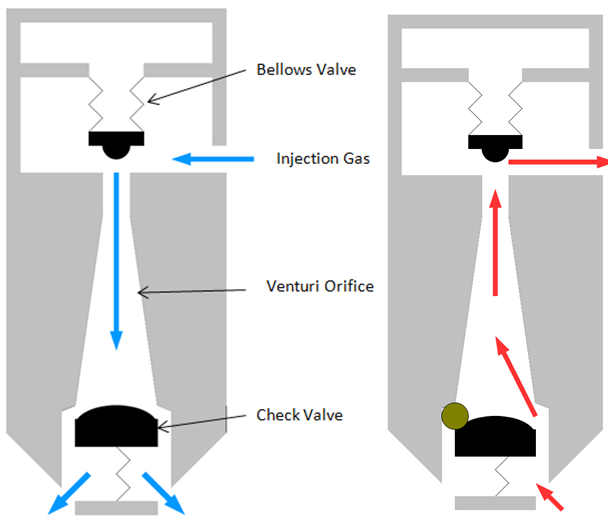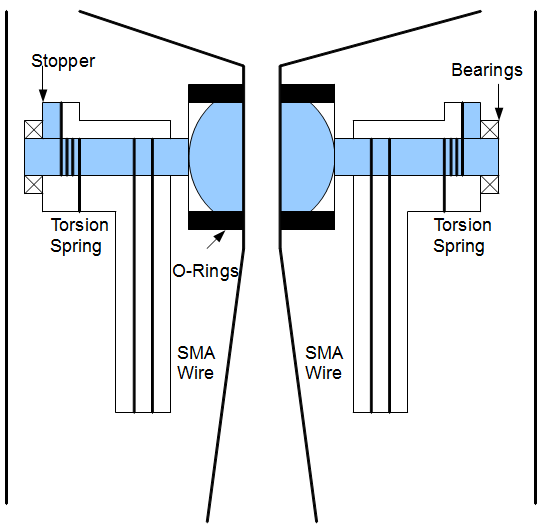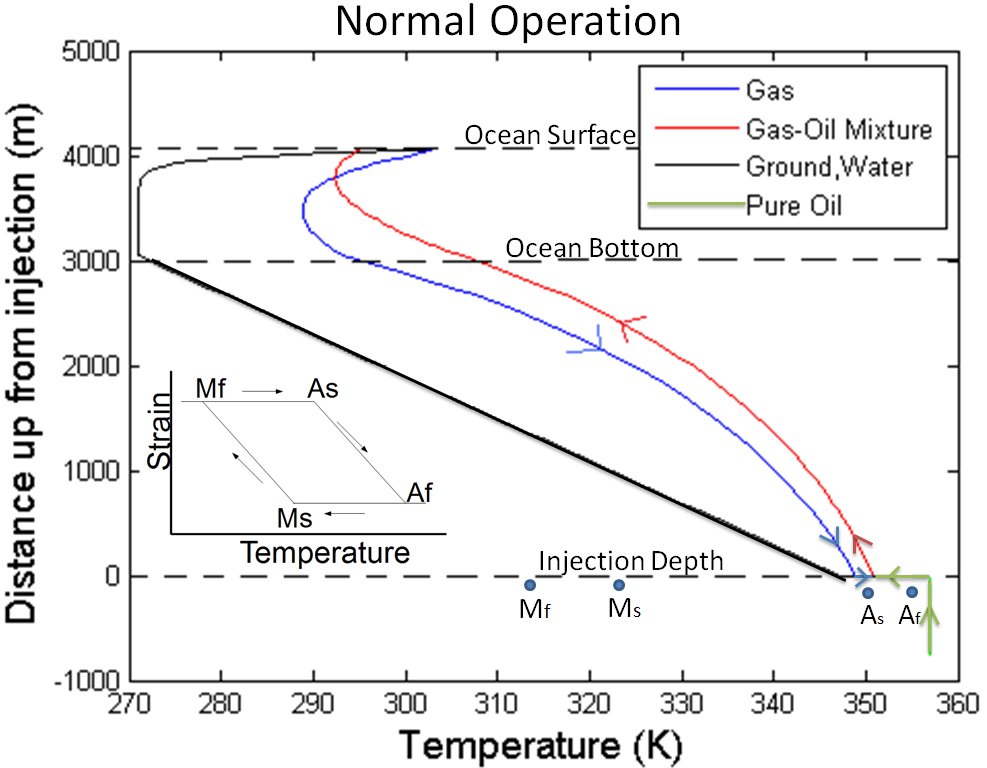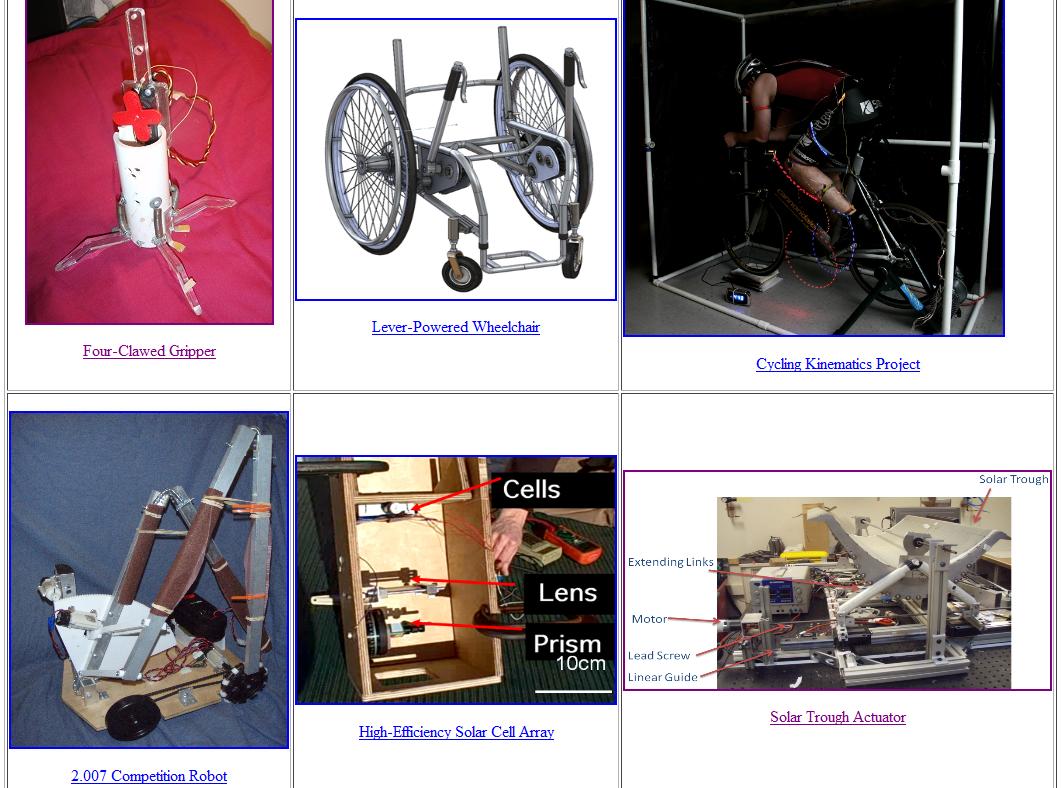Gas Lift Safety Valve - Masters Research
For my masters research I designed and prototyped a thermally-actuated gas-lift safety valve for use in offshore oil production. The valve has a novel design which uses a completely independent signal - a temperature change - from any other valves in the system, and can prevent undesirable oil backflow. The valve uses shape memory alloy wires which act as both sensors and actuators, allowing the valve to have a very low parts count. Masters Thesis Abstract: Gas-lifted oil wells are susceptible to failure through malfunction of gas lift valves. This is a growing concern as offshore wells are drilled thousands of meters below the ocean floor in extreme temperature and pressure conditions and repair and monitoring become more difficult. Gas lift valves and oil well systems have been modeled but system failure modes are not well understood. In this thesis a quasi-steady-state fluid-mechanical model and a transient thermal model are constructed to study failure modes and sensitivities of a gas-lifted well system including the reservoir, two-phase flow within the tubing, and gas lift valve geometry. A set of three differential algebraic equations of the system is solved to determine the system state. Gas lift valve, two-phase flow, and reservoir models are validated with well and experimental data. Sensitivity analysis is performed on the model and sensitive parameters are identified. Failure modes of the system and parameter values that lead to failure modes are identified using Monte Carlo simulation. In particular, we find that the failure mode of backflow through the gas lift valve with a leaky check valve is sensitive to small variations in several design parameters. Click here to read my masters thesis. (Full Text, PDF)
Left: 3X scale plastic prototype. Right: True-scale stainless steel prototype safety valve
Left: Normal operation and backflow failure mode of normal gas lift valve. Right: Side view of gas lift valve with thermally-actuated ball valve inside.
Plot showing model of temperature profiles vs depth in an injection-pressure-operated gas-lift well. The temperature difference between gas and oil (blue and green) at injection depth is the thermal signal that actuates the safety valve in the event of oil backflow up the annulus. As and Af are shape memory alloy austenitic start and finish transition temperature respectively, and Ms and Mf are Martensitic start and finish temperatures, respectively.
Experimental testing of stainless steel prototype. Temperature-controlled water is pumped through the prototype. A tilt sensor is externally mounted to the ball valve. As the temperature increases past As and Af (as shown in the left figure), the valve rotates closed. The figure on the right shows water temperature vs ball valve angular displacement.
|
